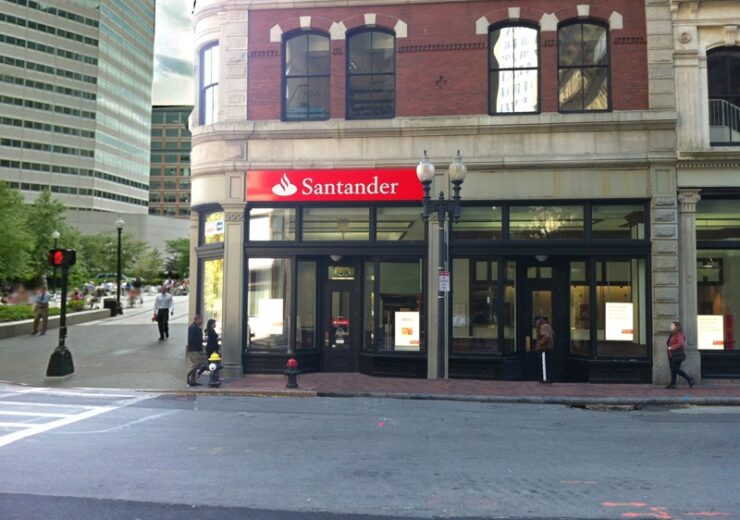The new digital solution allows businesses to access funds faster than with a traditional lockbox service, eliminating manual data entry and minimising risks and overall operating costs

Santander Bank, Summer Street, Boston, US. (Credit: Hectr/Wikipedia)
Santander Bank, a wholly-owned subsidiary of the Spanish Santander Group, has launched a new digital solution, Santander eLockBox, to streamline incoming digital payments and simplify electronic receivables management for businesses.
Santander eLockbox enables customers to automate their revenue cycle, save time, minimise costs, and optimise more resources to help support the needs of their firms.
It works by providing an option for customers to be paid electronically instead of by paper check.
The new solution combines payments from a firm’s online banking or other electronic payment services into one electronic payment data file to facilitate posting and reconciliation, along with a single, streamlined automated clearing house (ACH) daily deposit for all collected payments.
Santander eLockBox allows businesses to access funds faster than with a traditional lockbox service, eliminating manual data entry and minimising risks and overall operating costs.
Additionally, the digital solution combines payment transmissions from network connections to the consumer bill-payment service providers and financial institutions.
It will also help Santander meet its environmental, social and governance (ESG) goals, including achieving carbon neutrality in its operations.
Santander transaction banking head Ken Deveaux said: “The launch of our comprehensive Santander eLockBox service is a great solution for clients who are ready to simplify their electronic payment processes.
“Santander eLockbox is a prime example of our ongoing investment in technology to further digitise our banking solutions and create a more convenient, accessible and simplified experience for our customers.”
The bank said that the introduction of Santander eLockBox comes on the heels of increasing demand for more digitised, contactless payments due to the Covid-19 pandemic.
